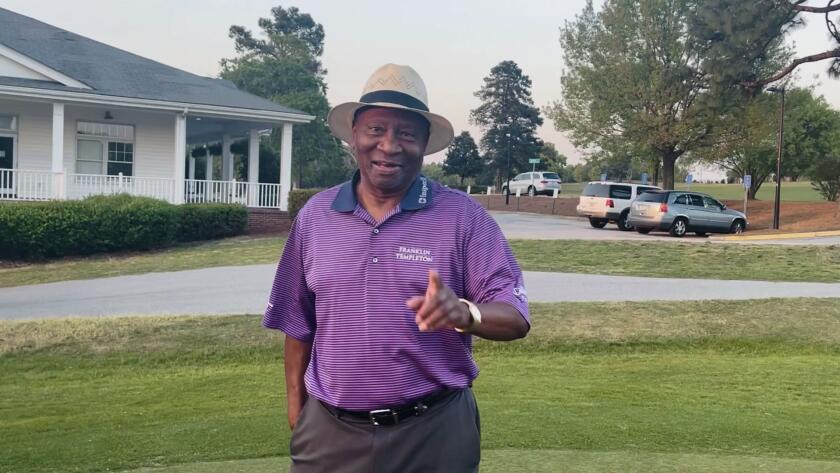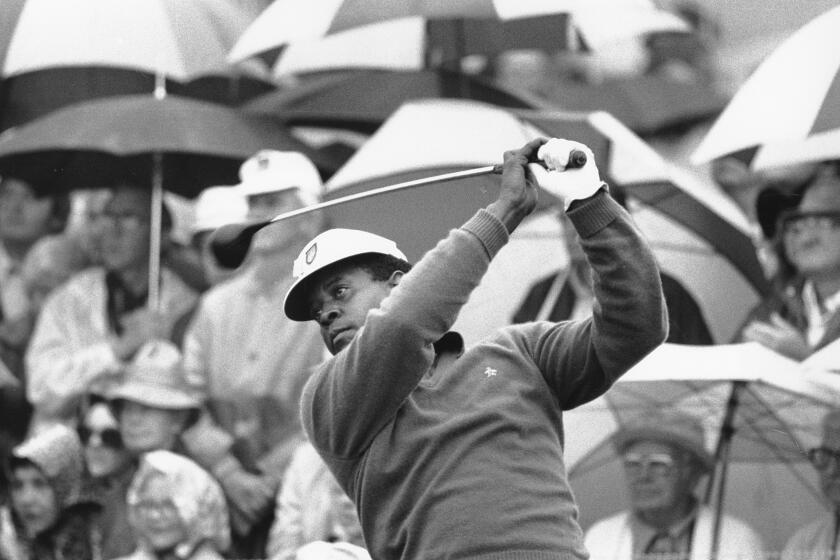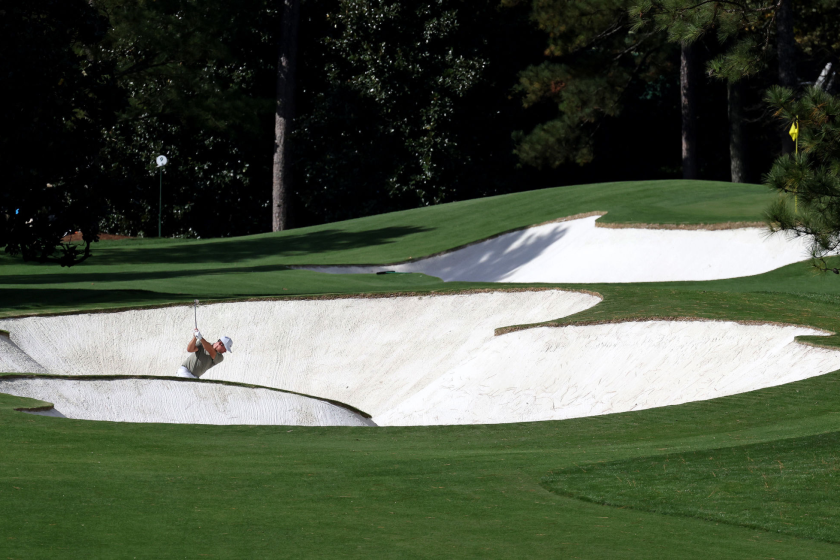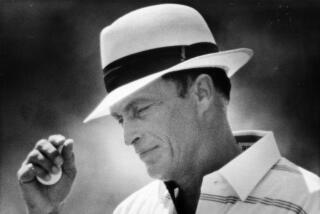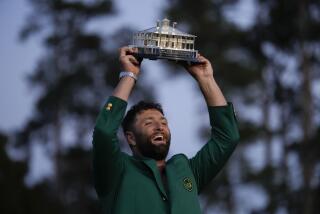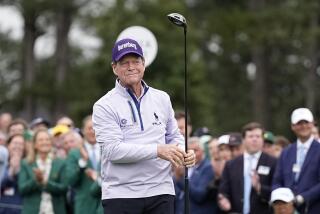AUGUSTA, Ga. — It wasn’t the steamy Georgia heat that prompted caddie Walter Pritchett to drape a golf towel over his head and under his cap during the final round of the 1971 Masters. He was concerned about the television cameras trained on his golfer, Charles Coody, who should have been a non-factor in the tournament but was a surprise leader.
The gangly Pritchett, an angular collection of knees and elbows nicknamed “Cricket,” had taken a sick week at his other job as a bus driver in Atlanta, and he was terrified his boss might recognize him on the grainy broadcast. Perhaps it was that cat-and-mouse game that kept Coody loose — he was unflustered by the great Jack Nicklaus on his heels — and he went on to collect his biggest career victory by far. His caddie could hide no longer.
“He was supposed to be in Houston,” recalled Coody from his home in Abilene, Texas. “He’d told his boss that his grandmother was sick, and he had to go into disguise. I just about broke up. Then he said, `’I didn’t expect you to play this good.’”
Fifty years later, golf has achieved what Pritchett could not. Those career caddies at Augusta National Golf Club, the only competitive role Black people were allowed to play in the storied tournament, have disappeared from sight. A rules change in 1983 cleared the way for golfers to bring their own caddies to the event, as opposed to relying exclusively on club-provided locals, and that has evolved into the top PGA Tour players traveling with personal teams that include nutritionists, chefs, psychologists, and swing coaches.
With a few occasional exceptions, those Black caddies were relegated to history after that rules change. Most of them have died and are best remembered by their glorious nicknames — Iron Man, Cemetery, Cigarette Jones, brothers Do-Hickey and Do-Funny — whereas some are still around, with a few of them spending their days playing across town at Augusta Municipal, a public course affectionately known as The Patch.
“The Masters is not like when we was caddying back in the day,” said Buck Moore, who started carrying bags as a teenager in Augusta and eventually worked more than 30 Masters tournaments. “We was geared up for it. The Masters coming this week, everybody knows what they were going to do. We were going to have parties and all that. It ain’t like that now. It’s kind of like you gotta stay in your lane.”
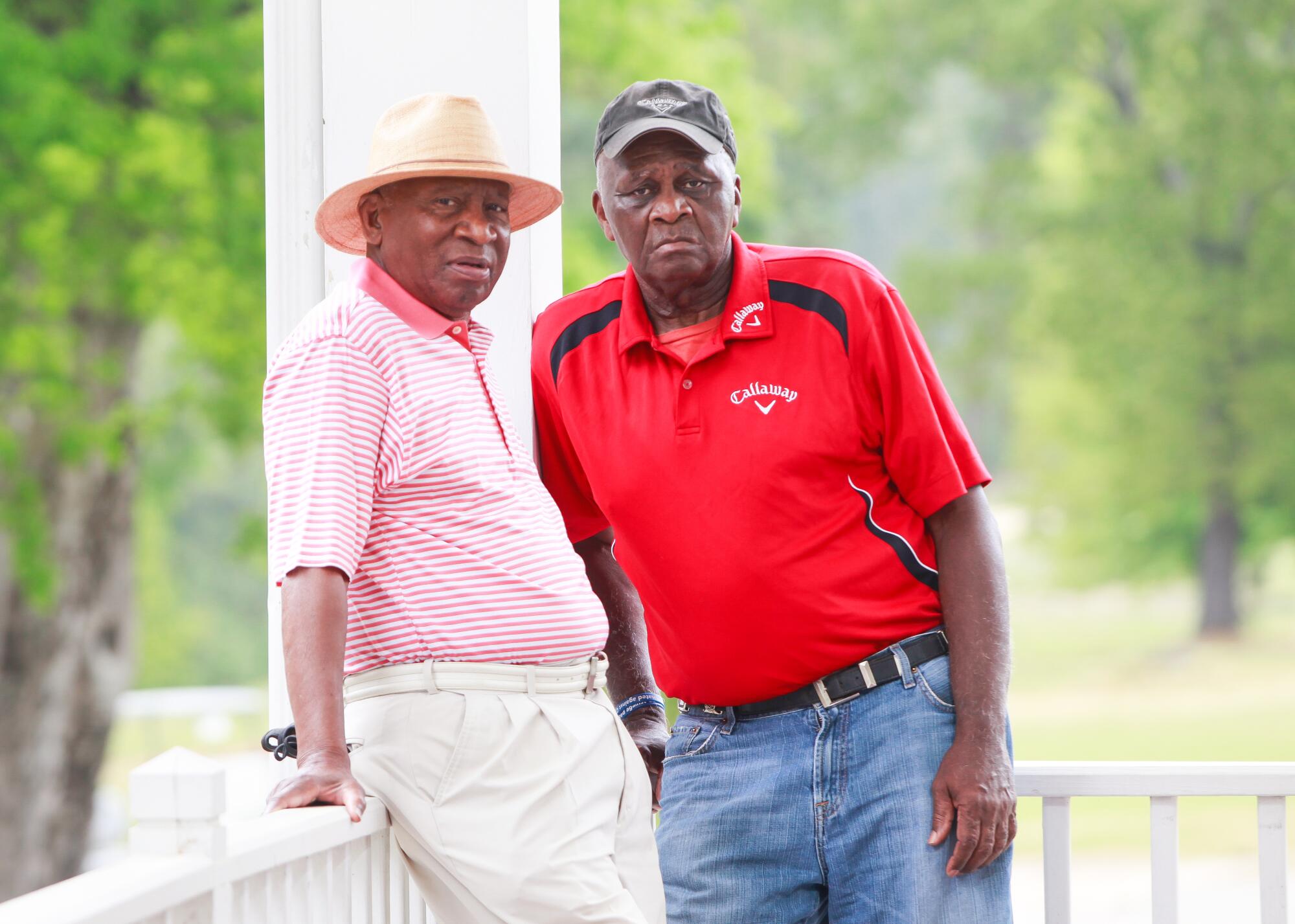
The topic is in sharp relief these days amid heightened racial tensions around the country, Georgia’s controversial new voting law, and renewed efforts by Augusta National to address inequities in its past. Lee Elder, who in 1975 became the first Black golfer to play in the Masters, was honored Thursday during the ceremonial first tee shot to open the tournament, and Augusta National has partnered with AT&T, Bank of America, IBM, and other companies to invest tens of millions of dollars into underprivileged neighborhoods of the state’s second-largest city.
“It’s a delicate time,” Moore said. “The eyes of the world are on you.”
And the eyes of these caddies set them apart. They knew every blade of grass on that pristine course, because their everyday job was carrying golf bags for members, sometimes earning more in a day than their parents would make in a week. It’s customary for caddies to be paid 10% of their players’ winnings, which means Pritchett would have made $2,500 for winning with Coody.
How much caddies were relied upon for their input varied from player to player. Coody liked the companionship and needed someone to carry his bag at Augusta, of course, but didn’t want any help making club selections or reading greens.
“You would converse on some things with your caddie, but it wasn’t like it is out there today,” Coody said. “These days, it’s like the caddie is giving the player a lesson sometimes. It really blows my mind that a player is standing there and he can’t throw up some grass and figure out which way the wind is blowing. He’s got to throw it up and watch the grass blow away, and then he asks the caddie, ‘Where’s it coming from?’
Buck Moore, Tommy Bennett and Jariah Beard talk about the triumphs and challenges they experienced working as caddies for professional golfers at the Masters.
“The caddies in the old days were good, hard-working people, and they worked hard out there on the tour. They’d go out and walk the golf course to find out where the pins were, before the PGA would give you pin sheets. They would have an awful lot of information that you didn’t have. But it wasn’t all the conversation that it is now.
“There was a phrase that used to be used, and it was about six words: Show up, keep up, and shut up. In other words, if I ask you something, then give me an answer. But you’d better be right with your answer.”
Gary Player, who won three green jackets, said the best caddie he ever had was Ernest Nipper, who first carried the bag for him in 1959.
“He was a very good golfer. He lived here. He knew his greens inside out,” Player said.
“I vividly remember getting on the fourth hole, and I had a putt of about six foot for a par from the left-hand side of the putt and the flag was back left, and I said, ‘Nipper, this is left lip.’
“He says, ‘Black Knight, this is on the right lip.’
Lee Elder, the first Black man to play at the Masters, has made a monumental contribution to golf and will appear alongside Jack Nicklaus and Gary Player at the 2021 event.
“I said, ‘It’s not, it’s on the left lip.’
“He says, ‘If it’s not on the right lip, you don’t have to pay me.’
“I said, ‘Now I’m convinced.’”
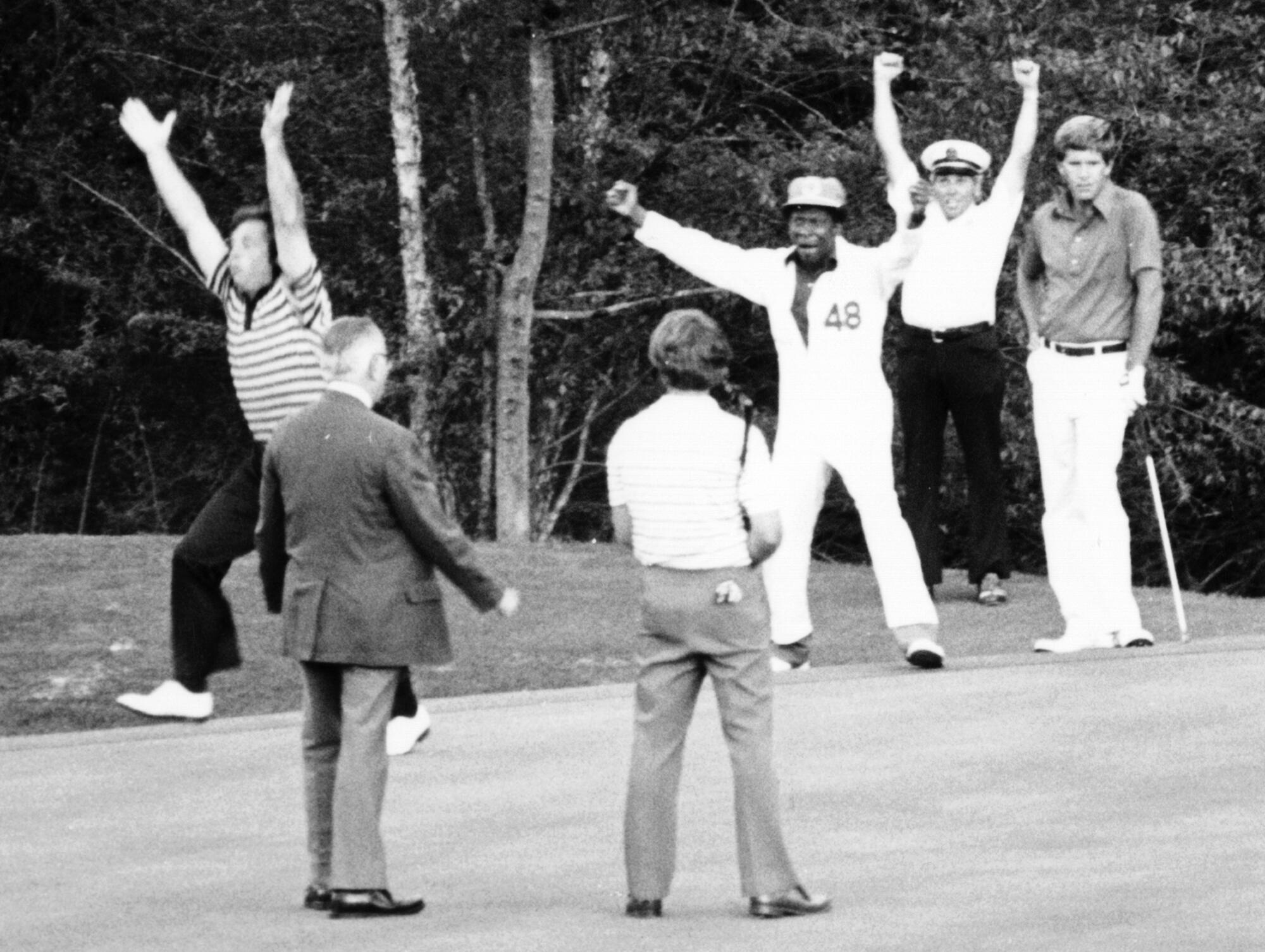
In 1979, Jariah “Bubba” Beard caddied for Fuzzy Zoeller, who became just the third player in history to win the Masters in his first appearance. The other two came in 1934 and ’35, within two years of when Augusta National was founded.
“Ask Fuzzy,” said Beard, 80, who has the trim physique of someone half his age. “He said he played like a blind man with a seeing-eye dog.”
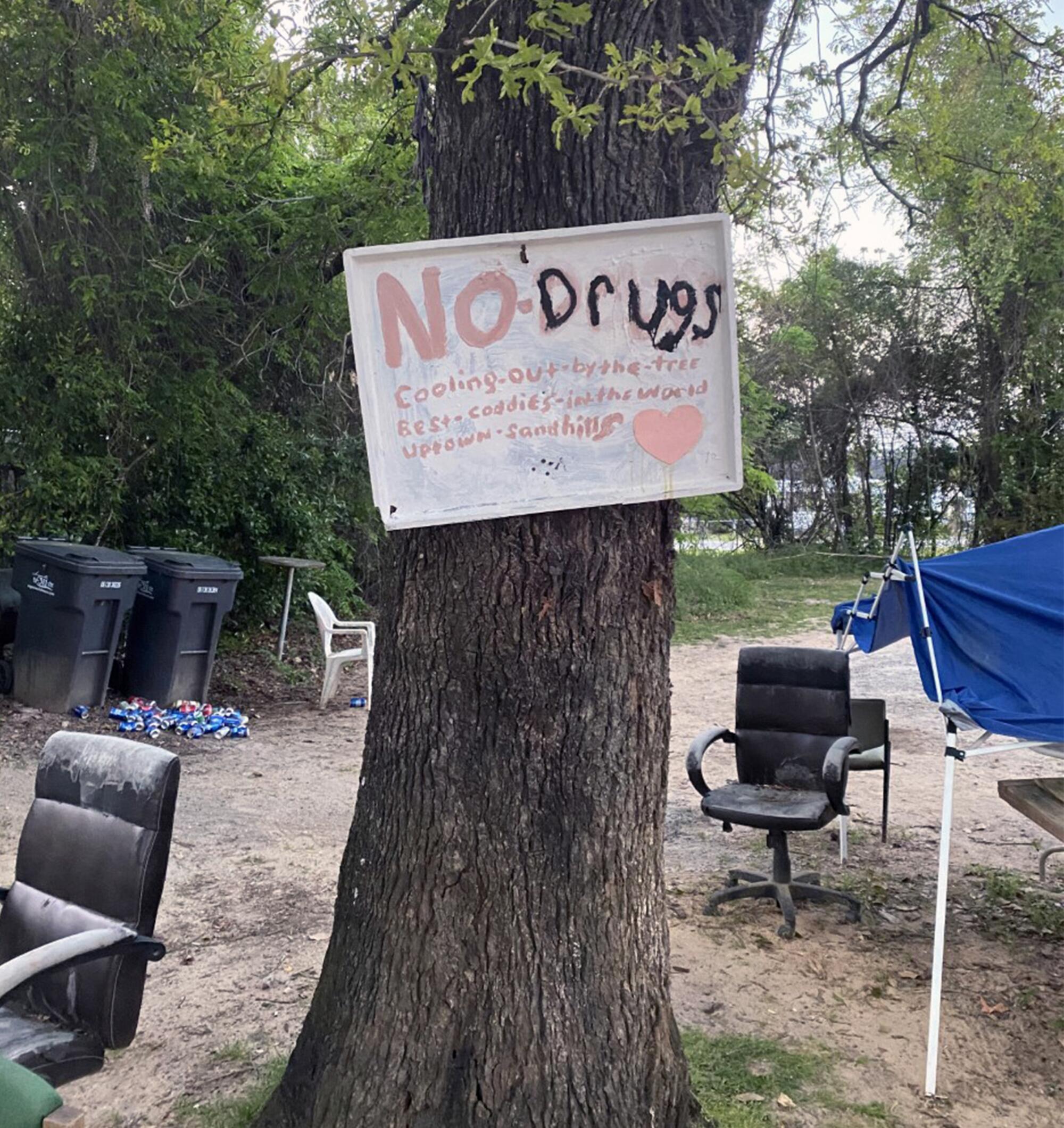
The Patch is a favorite hangout for Tommy Bennett, who in 1995 caddied for a 19-year-old amateur named Tiger Woods, playing in his first Masters. Woods would tie for 41st and make a PGA Tour cut for the first time in eight starts, but Bennett was sure the kid was making a rookie mistake when his bag was conspicuously light on golf balls.
“We go to the range, then I go in his bag to take the putter out, and he’s got three golf balls,” Bennett said. “I’m searching, and dang. He comes up and says, `What’s up?’ And I said, ‘`Man, listen, you ain’t got but three golf balls.’ He said that’s all he needed. It’s Augusta National. I started sweating and I’m like, `does this kid know what he’s doing?
“He played with two golf balls that day, and after 18 he had one left. He said, `I told ya.’ Never lost a ball.”
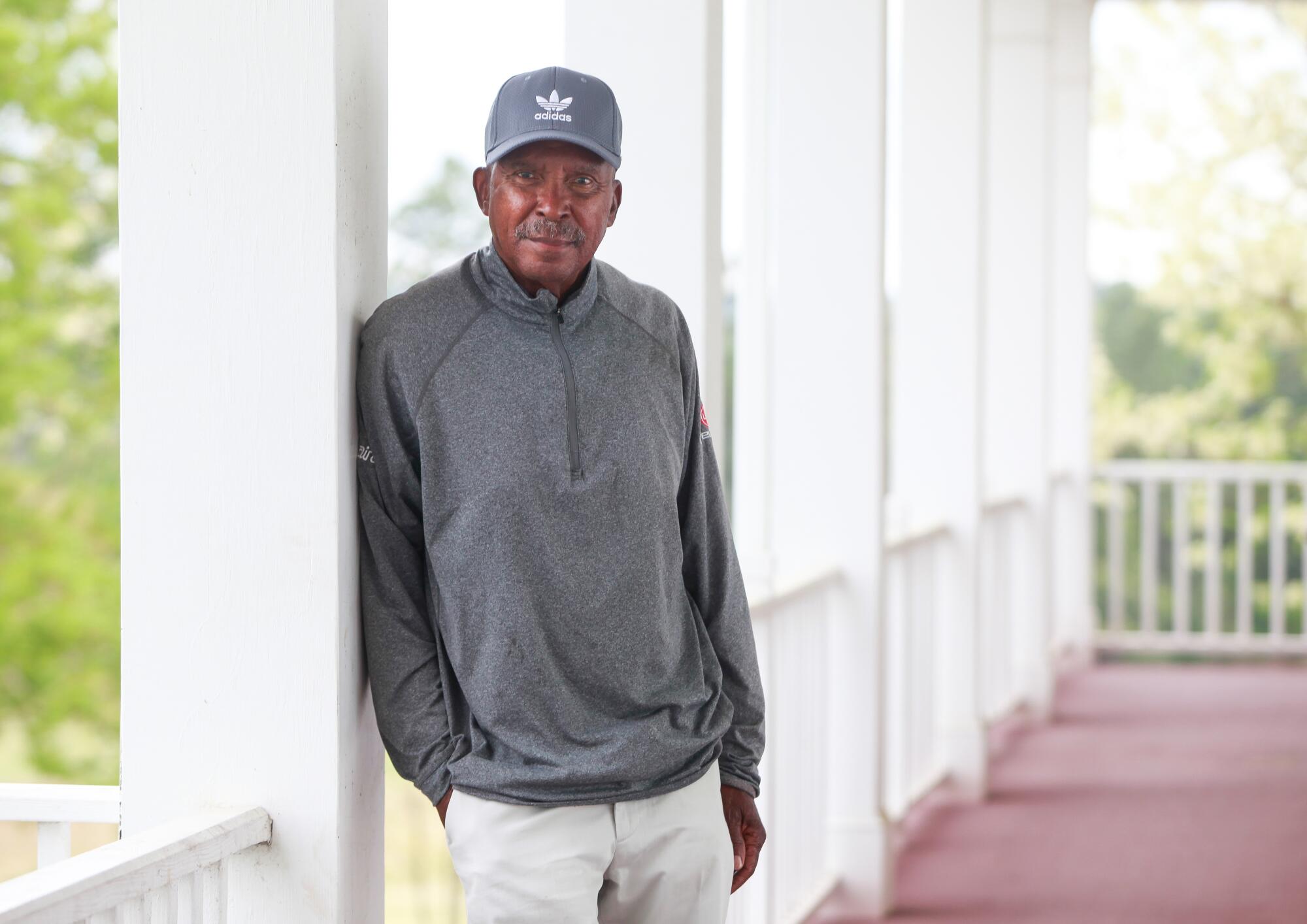
Bennett was known as “Burnt Biscuits,” because he suffered burns on his legs as a kid when he tried to steal his grandmother’s freshly baked biscuits. He was a good enough caddie to keep his job even after tour pros stopped using locals, working for Raymond Floyd, Tommy Aaron, Al Geiberger, Andy North and others.
Some caddies weren’t as suited for the job.
“My experience here is I came here the first time in 1959, and I had a fellow that actually came from — I don’t know how much he caddied here, but he caddied here — from Atlanta named Pon. And Pon, that’s all I knew him by, caddied for me the first year, and I played decently but didn’t make the cut,” recalled Nicklaus, the Masters’ only six-time winner.
“The next year I came back, and I remember Freddie, the caddie master, said, ‘Pon, Mr. Nicklaus is here. He’s ready to get out and go play.’ He said, ‘Well, I don’t want to caddie for Mr. Nicklaus.’
‘Why don’t you want to caddie for Mr. Nicklaus?’
‘He worked too hard.’ He says, `’He comes too early and he leaves too late. I don’t want to do that.’”
So Nicklaus switched to Willie Peterson, who first caddied in the Masters in 1954 at 16 and had never worked the tournament for the same player twice. In that all-white caddie jumpsuit, with a cigarette dangling from his lips and a towel swinging over his head, Peterson was on the bag when Nicklaus won green jackets in 1963, ‘65, ‘66, ‘72 and ’75.
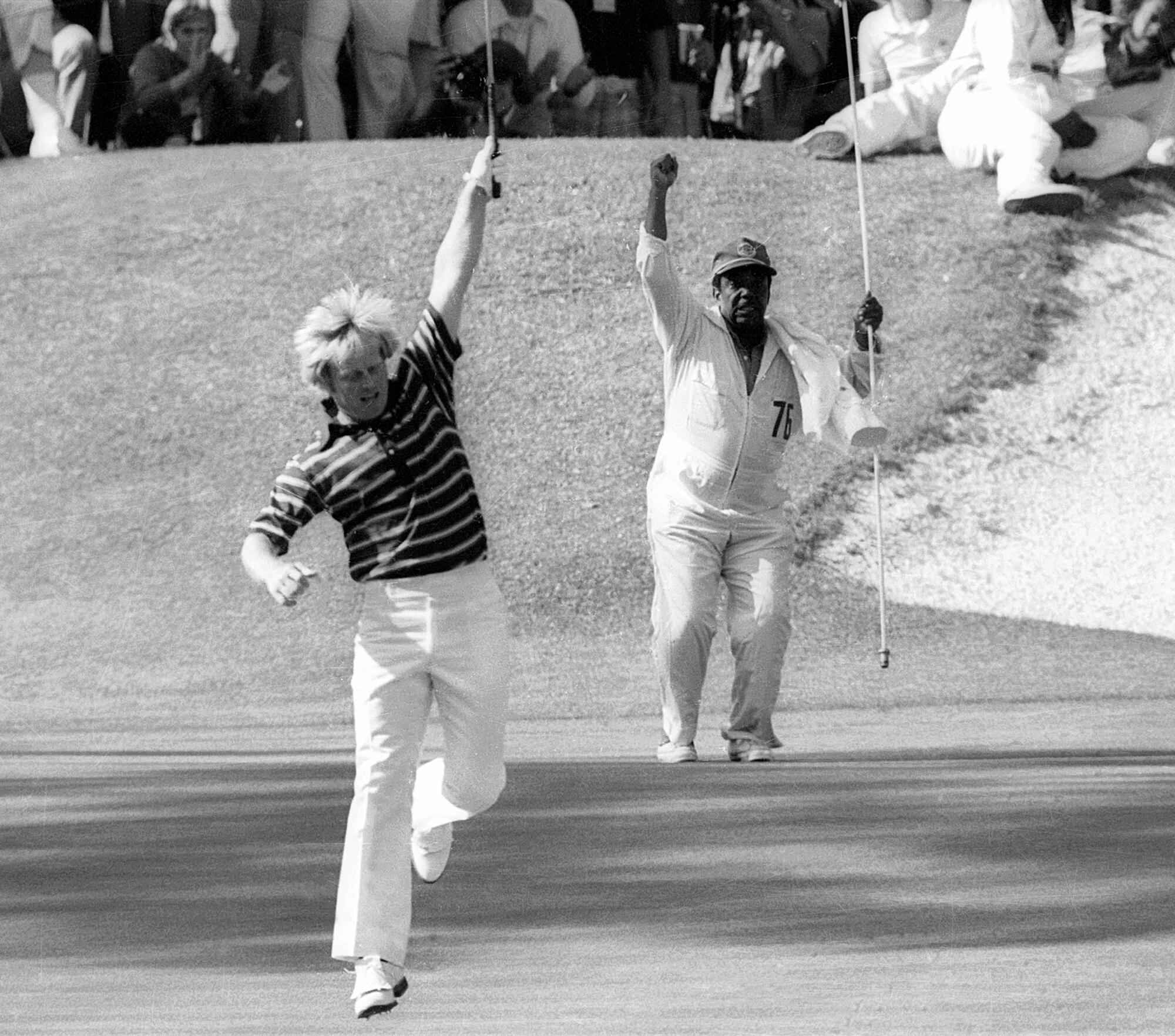
When Nicklaus drained a twisting, undulating 38-foot putt on the par-three 16th hole on his way to winning the tournament in 1975, Peterson was leaping with euphoria even before the ball dropped in the hole. Legendary Sports Illustrated writer Dan Jenkins likened Nicklaus and Peterson to Fred Astaire and Ginger Rogers with the way they gracefully worked the green. Peterson and Nicklaus were in synch, yet had completely different personalities.
“Willie was unbelievably outgoing, like a guy at a baseball game waving his towel when there’s a home run,” said Ward Clayton, author of “Men on the Bag: The Caddies of Augusta National.”
“He’d go make these stupid wagers with people, because he was confident, he was cocky. Really a personality. Whereas Jack was very reserved when he played golf. Jack didn’t want him to read putts, didn’t want him to club him. It didn’t matter who was caddying for him. Jack was his own guy. But at the same time, Willie kept him loose. He was a psychologist, almost.”
Of the four major championships, by the late 1970s, the Masters was the only one that did not allow competitors to bring caddies from outside the club. There was more money in golf, the purses were more lucrative, and players wanted caddies with whom they worked on a year-round basis.
It looks like sand from a tropical beach, but the material gleaming from the bunkers at Augusta National actually comes from the mountains of North Carolina.
“Can you imagine being in a position where you work all year long with a partner, and then one week in one of the biggest tournaments of the year you’re not allowed to work with him?” Clayton said. “They kept pushing Augusta to let them bring their own caddies.
“Then in 1982, they had a rain delay in the afternoon, and there was some confusion about what time they were going to resume the next morning. A couple of the caddies didn’t show. A couple of the guys had to carry their own bags for a little bit, or had a wife or a friend caddie for them, and that was the last straw. It was going to happen anyway, but that was sort of the breaking point.”
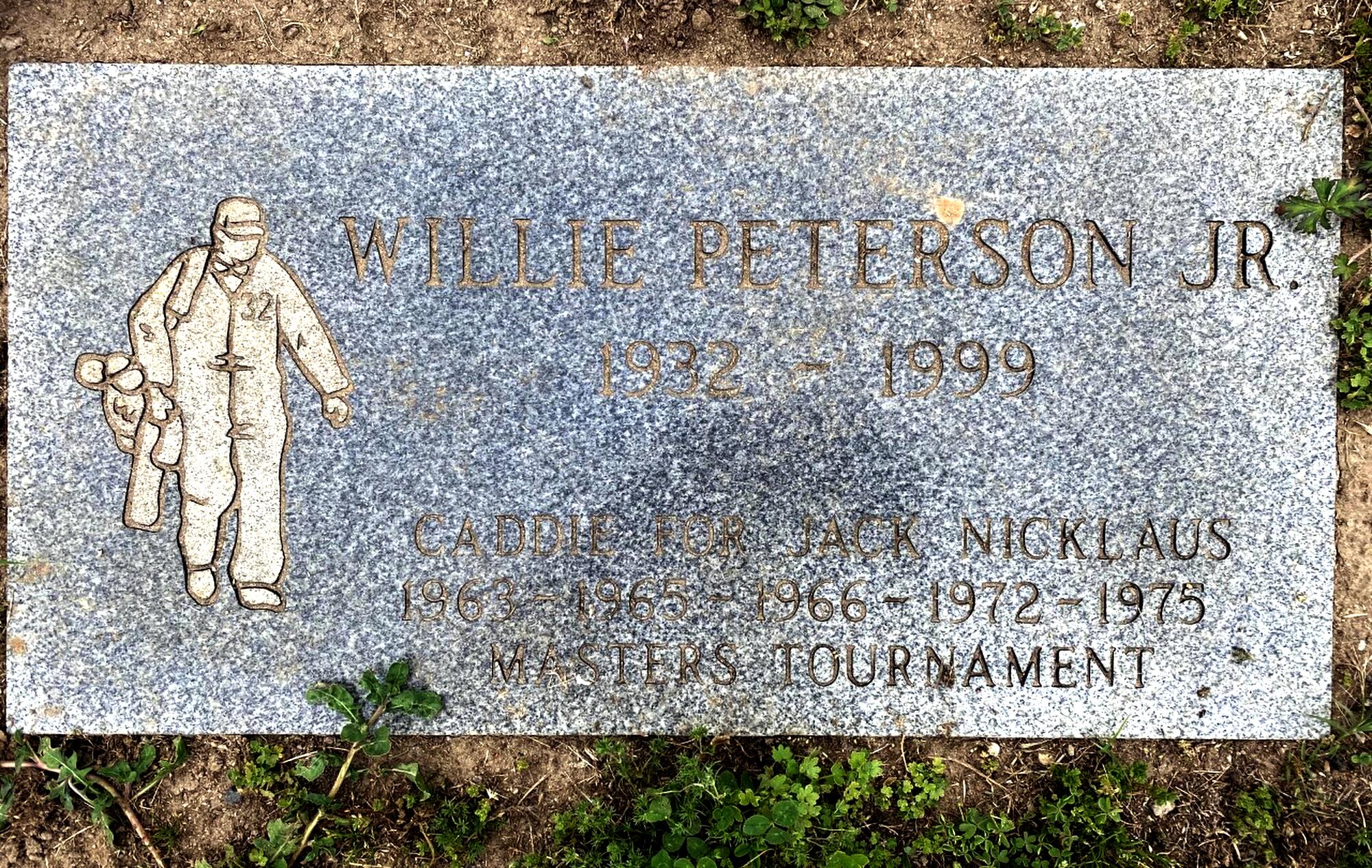
Nicklaus withdrew from the 1983 Masters with back spasms after the first round. Although Peterson was on his bag that year, it was his last year caddying in the Masters. Like the vast majority of players on tour, Nicklaus moved on to a traveling caddie. He won one more Masters with his son, Jack Nicklaus II, carrying his bag. Last year, when Nicklaus learned that Peterson was buried in an unmarked grave in downtown Augusta, the golfer paid for a marble headstone.
“For years and years, nobody knew these men by anything but a nickname,” Clayton said. “You didn’t know what their real name was. You didn’t know what they did, other than caddie. That’s always intrigued me, trying to find out who the people were behind those caddie suits.”
More to Read
Go beyond the scoreboard
Get the latest on L.A.'s teams in the daily Sports Report newsletter.
You may occasionally receive promotional content from the Los Angeles Times.

